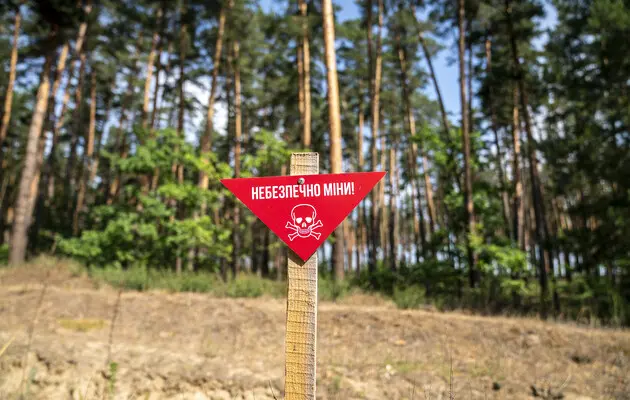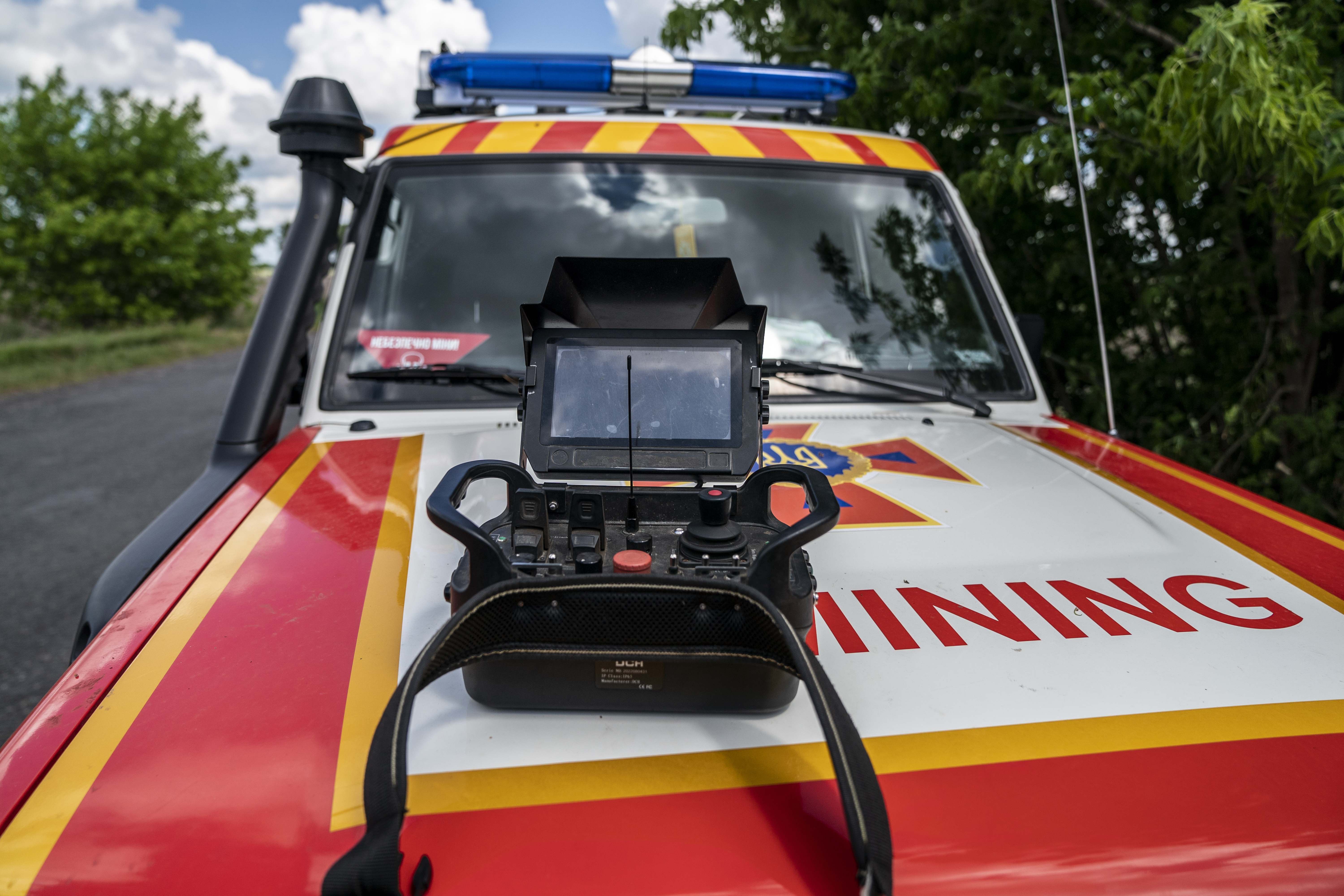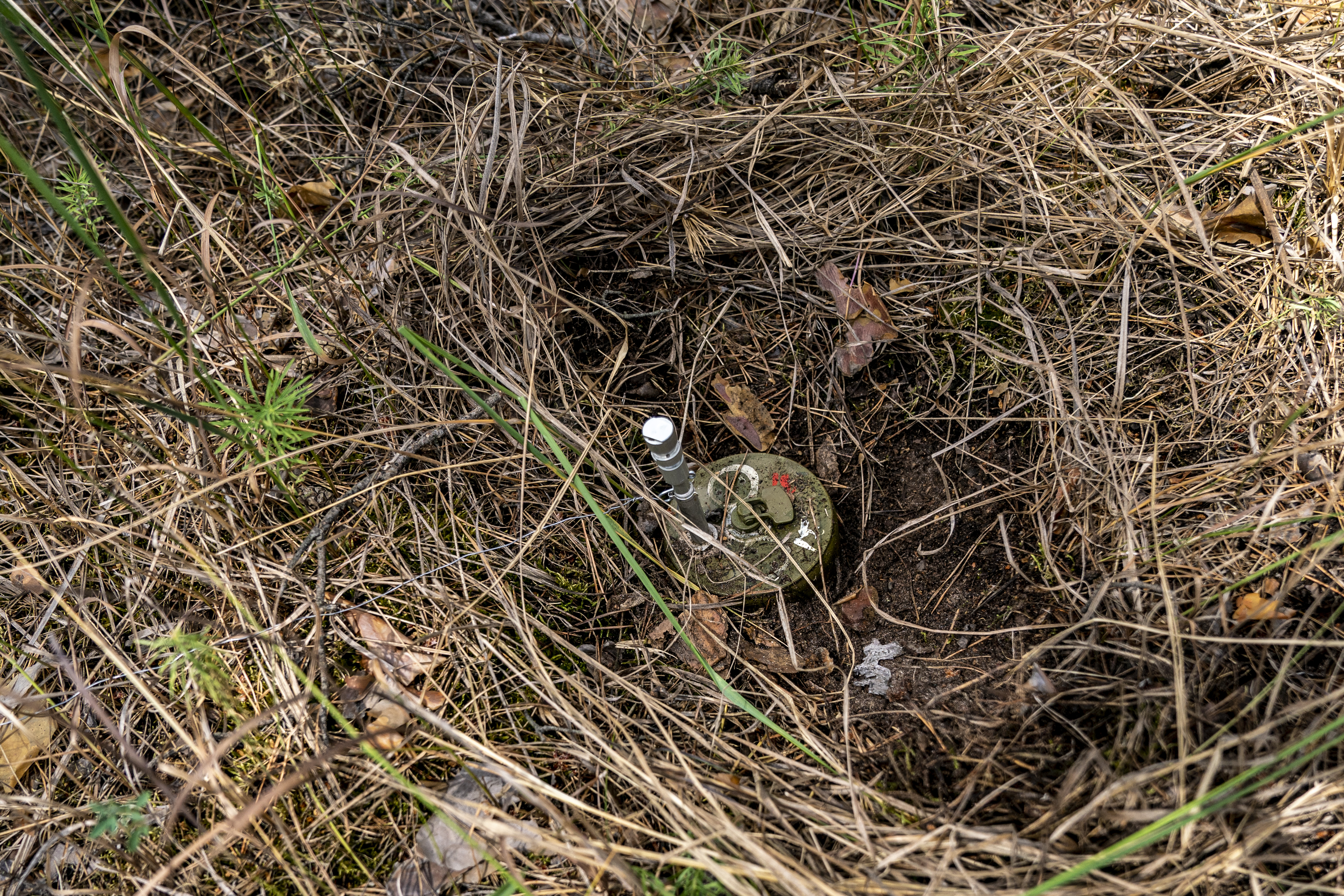Mine Action Strategy-2033. The Main Challenges

The issue of contamination of Ukrainian territories with explosive remnants of war as a result of Russia's war against Ukraine is one of the global problems, the consequences of which reach far beyond the borders of our country. In October of last year, we published an author's article on the scale of mined areas, in which we presented a preliminary vision of ways to solve this problem in the short and long term.
The complexity of this existential war unleashed by Russia is, among other things, that the enemy violates all possible principles and values of international law, including the laws and customs of warfare. The troops of the Russian Federation, contrary to international conventions on the prohibition of the use of mines, will continue to actively use weapons of indiscriminate action. The density of mining of Ukrainian lands is unprecedented on the European continent.
Like any global issue, humanitarian demining of Ukraine requires coordination and coherence of actions not only by state authorities, but also by the international community, civil society, local governments, the private sector, and the educational environment.
For this purpose, the Ministry for Development of Economy and Trade of Ukraine, in cooperation with the Ministry of Internal Affairs of Ukraine, the Ministry of Defense of Ukraine, the State Emergency Service of Ukraine, the National Police of Ukraine, other central bodies of executive power, as well as together with international partners and private operators of mine action, developed the National Mine Action Strategy for the period until 2033. In addition, these structures developed an operational plan of measures for its implementation in 2024-2026 (hereinafter referred to as the Strategy). The specified documents were approved by the National Mine Action Authority and were also approved and certified by the Cabinet of Ministers of Ukraine on June 28, 2024.
What is the essence of the Strategy?
This long-term document defines the problems that pose a threat to national security due to the contamination of the territories of Ukraine with explosive remnants of war as a result of Russia's armed aggression, as well as the main directions and tasks of the state policy in the field of mine action, ways of realizing the national interests of the state in this area, which are determined by the corresponding strategic goals.
The importance of the mentioned document lies in the aspiration that the demining process does not take place according to the principle of the Ukrainian folk tale "The Swan, the Pike and the Cancer", when each body authorized to carry out demining will act separately from the others. That is, private mine action operators will act in their own way, and international partners will not be aware of the real volumes and types of assistance needed to improve the dynamics of security and the quality of demining. In fact, the Strategy is a unifying document containing clear and agreed strategic goals divided into three stages of implementation. Each stage will have a detailed operational plan, where tasks, executors, deadlines and indicators will be defined.
The National Mine Action Strategy until 2033 contains three strategic goals, namely:
- ensuring that territories are freed from the risks of explosive remnants of war for their safe and productive use;
- reducing the impact of explosive remnants of war on the life and health of the population;
- development of the mine action management system.
The path to achieving each of the strategic goals is divided into three conditional stages: 2024–2026, 2027–2029, and 2030–2033. Tactical tasks and indicators of their implementation are defined for each of the stages.
Key challenges
The approved Government Strategy states that as of January 1, 2024, according to the data of the National Mine Action Authority, which is verified in the Information Management System for Mine Action (IMSMA), the total area of the territories directly affected by Russia's armed aggression, is almost 156,000 square kilometers. At the same time, as of July this year, the specified area is 144,000 square kilometers. This assessment is not final because active hostilities are ongoing.
Let me remind you that as of the beginning of 2023, the area of territories potentially contaminated by explosive remnants of war was 174,000 square kilometers. This does not mean that the security and defense forces from 2023 to July 2024 carried out deep cleaning of territories with an area of 30 thousand square kilometers. These are general data on demined territories and territories on which a non-technical survey was conducted (such survey and demining should be distinguished).
The purpose of conducting a non-technical survey is to classify by hazard status the territory, regarding which there is a suspicion of its contamination by explosive remnants of war on the basis of the received direct and indirect evidence, as well as the preparation of proposals for carrying out a technical survey, cleaning (demining) and (or) exclusion (unlocking) territory.
For example, if the territory was under the occupation of the Russian Federation for a certain time, then its entire area, regardless of the topography and type of terrain, is considered potentially dangerous and contaminated with explosive remnants of war.
At the same time, the international experience of mine countermeasures shows that the actual volume of contamination by explosive remnants of war may not exceed 10% of the total volume of territories directly affected by Russian aggression. Thus, the return of the majority of probably contaminated territories to productive use does not require direct demining, but an initial non-technical survey by the competent authorities. According to the Strategy, by 2026 it is planned to carry out an initial non-technical survey of 100% of the territories controlled by Ukraine, where it is possible to carry out humanitarian demining measures.
The examination of the territories where the occupier was for up to two months (Kyiv Oblast, Chernihiv Oblast, Sumy Oblast, Kharkiv Oblast), territories that have been under Russian occupation for a long period of time, or directly on the front line is significantly different. Undoubtedly, such areas will require more thorough cleaning of explosive remnants of war.
Deep cleaning of territories
We are talking about a complex, dangerous and long process. According to the Strategy, by 2033 it is planned to return to productive use 80% of the territories that were directly affected by Russia's armed aggression.
Thanks to mechanized demining machines, of which there are currently 46 units, the clearance process is greatly accelerated, but they cannot always be used due to weather conditions, terrain, season, etc.
The safety of pyrotechnicians is our undisputed priority. In 2022, when there were no demining machines yet, 80 pyrotechnicians were injured while performing tasks, of which 15 died. In 2024, thanks to the active use of demining machines, the number of injured pyrotechnicians decreased by almost five times, which indicates an increase in the level of safety of personnel during the performance of relevant work.
The strategy clearly focuses on the continued use of innovative products, the involvement of the best world experience, the development of the national production of goods for mine action and their service in Ukraine.
The State Emergency Service of Ukraine and the National Police of Ukraine are already establishing cooperation with national enterprises that could service and manufacture parts for mechanized demining machines.
Thus, during demining operations, a GCS-100 mechanized demining machine manufactured by the German company GCS was damaged due to the detonation of a TM-62 anti-tank mine. The attached work tool was damaged, while the machine itself remained almost undamaged and did not require complex repairs. One of the domestic manufacturers produced an analog copy of the working tool, improving its operational characteristics. The device was produced in a full cycle, which helped to significantly reduce the cost of the equipment: a new tool in Germany costs about 50 thousand euros, while the domestic analogue costs less than 20 thousand. The tool is currently undergoing testing.
Competences of the Ministry of Internal Affairs of Ukraine in the field of demining
The strategy contains a comprehensive analysis of the problems of mined areas and their consequences for the short and long term, international experience, measures at the national and local levels, the participation of international partners, takes into account the support and stimulation of the private sector, education in the field of mine danger, development of national production capacity for the manufacture of demining equipment, etc.
Before the first stage of the implementation of the Strategy, the government approved the operational plan for 2024-2026. This plan envisages the completion of 16 tasks, the implementation of which involves almost all state authorities, local self-governments and private operators of mine action activities.
The main tasks that belong to the sphere of competence of the system of bodies of the Ministry of Internal Affairs of Ukraine are the following:
- determination of the scale and geographical boundaries of territories with a risk of contamination by explosive remnants of war;
- ensuring the sufficiency of human resources in the field of implementation of mine action activities;
- ensuring the population is informed about the geographical boundaries of territories that may pose a risk of explosive remnants of war;
- ensuring effective coordination of training on risks associated with explosive remnants of war, in particular, the development and implementation of an appropriate unified program;
- ensuring the necessary capacity of the executive authorities that manage in the field of mine action, including in the field of external monitoring of mine action activities;
- implementation of an effective system of task prioritization in the field of mine action;
- creation and functioning of the registry of territories contaminated/allegedly contaminated by explosive remnants of war;
- digitization of the process of certification of mine action operators and mine action processes.
These tasks complement the priorities in the field of humanitarian demining, which were determined by the Minister of Internal Affairs of Ukraine for 2024 and which can be successfully implemented:
- increasing the number of demining units of the Ministry of Internal Affairs of Ukraine;
- implementation of advanced demining technologies;
- equipping units with modern machinery and equipment for demining;
- development and improvement of the personnel training system for demining units, development of the educational and material base;
- involvement in demining of private mine action operators and promotion of certification of new market participants;
- accelerating the dynamics of demining every year to ensure the safety of the population;
- expansion and strengthening of the international coalition for the clearance of Ukrainian territories from explosive remnants of war.
Demining as part of the Peace Formula
As we have repeatedly noted, the problem of demining the territories of Ukraine covers at least three points of the Peace Formula proposed by the President of Ukraine:
"Radiation and nuclear safety";
"Energy security";
"Combating ecocide".
Returning to the main goal of the development and approval by the government of the National Mine Action Strategy for the period until 2033, we note that the coherence and coordination of forces, the rational use of means, the coherence of requests to increase the effectiveness of humanitarian demining are of paramount importance for the implementation of a long and complex mission – the complete clearance of territories of Ukraine against explosive remnants of war.
The full implementation of the Strategy will largely depend on the preservation of the international coalition on humanitarian demining. At the same time, it is appropriate to note that supporting Ukraine is not an expense, but an investment in a reliable partner for civilized countries. A partner who has accumulated the best world experience in the field of humanitarian demining and in the event of hostilities on the territory of other states will be able to provide comprehensive professional assistance.
This article is designed to once again draw attention to the global problem of humanity, at the epicenter of which the Ukrainian people found themselves – the territory contaminated by explosive remnants of war as a result of Russia's genocidal war against Ukraine. We and our descendants must be aware of the types and specifics of explosive remnants of war, the rules for handling them, the powers and responsibilities of various branches and levels of government in this area. Despite the fact that a significant part of society is not fully aware of the scale of the problem, unfortunately, this component of knowledge is a vital necessity for several future generations of Ukrainians.
In various regions of Ukraine, we still find explosive elements from the First and Second World Wars. This is the "legacy" of any major war, and the explosive remnants of war found each time are a tragic reminder of the duration of the destructive effects of military conflicts. Especially when it comes to the genocidal war of the terrorist state of the Russian Federation against the civilized world, with the aggressor's violation of all the principles and values of international law, including the use of weapons of indiscriminate action (mines, phosphorous ammunition, chemical weapons, and others).
Please select it with the mouse and press Ctrl+Enter or Submit a bug















 Login with Google
Login with Google